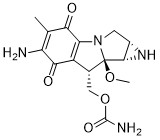Payloads and Linker modified Payloads
In the context of Antibody-Drug Conjugates (ADCs), payloads refer to the cytotoxic drugs or therapeutic agents attached to antibodies. These payloads are responsible for killing the target cells (such as cancer cells) once the ADC is delivered specifically to the target.
Key Features of ADC Payloads:
- High Potency: ADC payloads are extremely potent cytotoxic agents since they need to be effective in very small quantities to avoid harming healthy cells.
- Target Specificity: The payload is delivered to target cells through the antibody component, which binds specifically to antigens expressed by those cells (e.g., cancer cells).
- Linkers: The payload is typically attached to the antibody via a linker, which may be cleavable (by enzymes or pH changes) or non-cleavable, ensuring the payload is released only when inside the target cell.
Types of ADC Payloads:
- Microtubule Inhibitors:
- These payloads disrupt the microtubule network essential for cell division, leading to cell death. Examples include:
- MMAE (Monomethyl auristatin E) – derived from dolastatin, used in ADCs like brentuximab vedotin.
- MMAF (Monomethyl auristatin F) – another potent microtubule disruptor.
- These payloads disrupt the microtubule network essential for cell division, leading to cell death. Examples include:
- DNA-Damaging Agents:
- These payloads cause DNA breaks or cross-links, preventing the target cells from replicating or repairing DNA. Examples include:
- Calicheamicin – a potent DNA-damaging agent used in gemtuzumab ozogamicin.
- PBD (Pyrrolobenzodiazepine) dimers – a class of DNA-crosslinking agents.
- Duocarmycins – highly potent DNA-alkylating agents.
- These payloads cause DNA breaks or cross-links, preventing the target cells from replicating or repairing DNA. Examples include:
- Topoisomerase I Inhibitors:
- These inhibit topoisomerase I, an enzyme critical for DNA replication and transcription. This leads to DNA damage and apoptosis.
- SN-38 – a derivative of irinotecan, used in the ADC sacituzumab govitecan.
- These inhibit topoisomerase I, an enzyme critical for DNA replication and transcription. This leads to DNA damage and apoptosis.
- Other Cytotoxic Agents:
- Some payloads can work by inhibiting protein synthesis or other cellular processes.
Examples of ADC Payloads in Use:
- Brentuximab vedotin (Adcetris): Uses MMAE, a microtubule inhibitor, as its payload.
- Trastuzumab emtansine (Kadcyla): Carries DM1, another microtubule inhibitor derived from maytansine.
- Inotuzumab ozogamicin (Besponsa): Uses calicheamicin, a DNA-damaging agent.
Key Considerations in ADC Payload Design:
- Potency: The payload must be highly potent, as only a small amount is delivered to each cell.
- Stability: The payload should remain attached to the antibody until it reaches the target cells to avoid systemic toxicity.
- Release Mechanism: The linker and payload combination must ensure the payload is only released inside the target cell.
ADC payloads play a critical role in the therapeutic efficacy and safety of antibody-drug conjugates, offering targeted cancer treatment with reduced systemic side effects.

















































